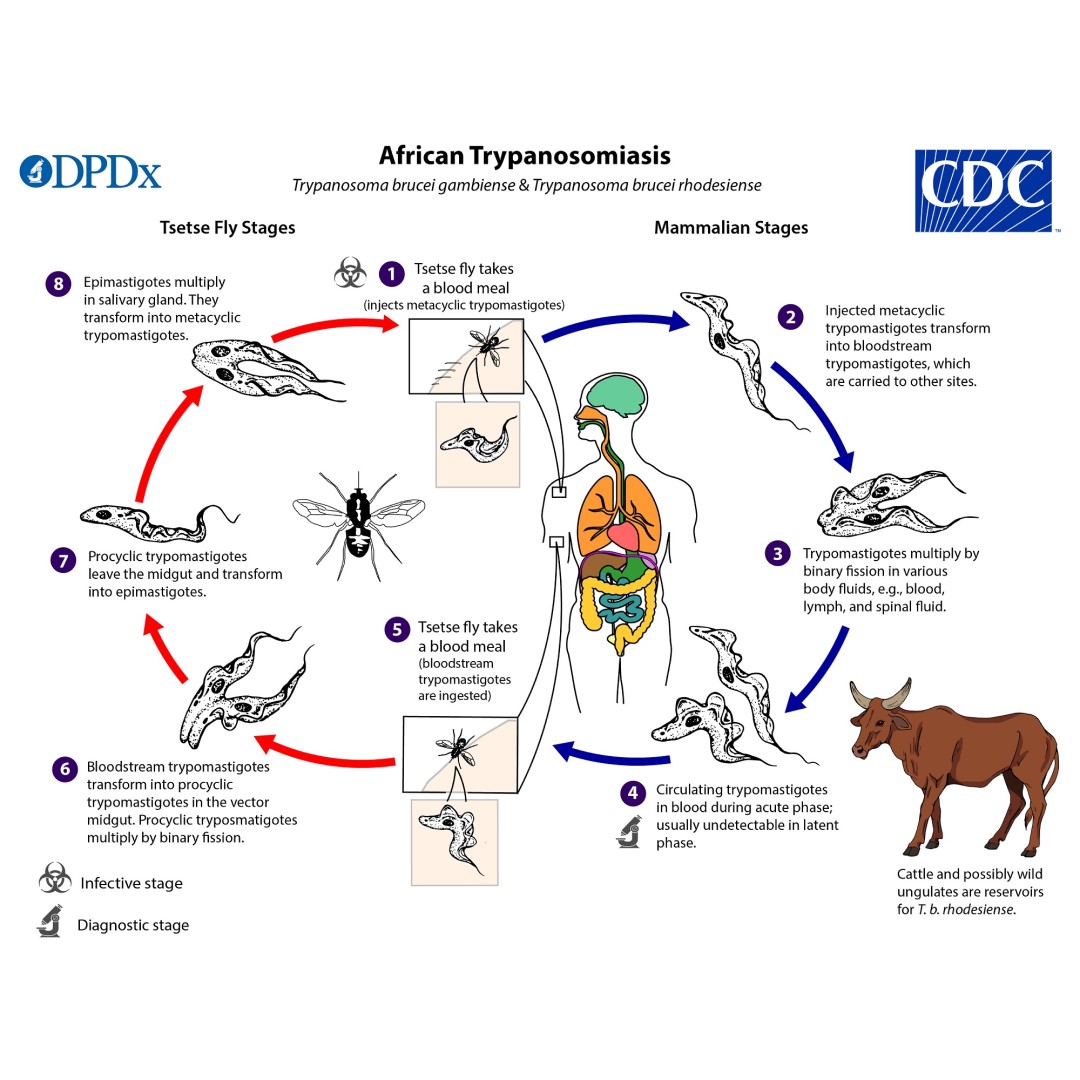
Kenya achieves elimination of human African trypanosomiasis or sleeping sickness as a public health problem
On Aug. 8, 2025, the World Health Organization (WHO) has validated Kenya as having eliminated human African trypanosomiasis (HAT) or sleeping sickness as a public health problem, making it the tenth country to reach this important milestone. HAT is the second neglected tropical disease (NTD) to be eliminated in Kenya: the country was certified free of Guinea worm disease in 2018.
HAT is a vector-borne disease caused by the blood parasite Trypanosoma brucei. It is transmitted to humans through the bites of tsetse flies that have acquired the parasites from infected humans or animals. Rural populations dependent on agriculture, fishing, animal husbandry or hunting are most at risk of exposure.
As the name indicates, HAT is transmitted only on the African continent. The disease exists in two forms, gambiense and rhodesiense. The rhodesiense form (r-HAT), which is found in eastern and southern Africa, is the only one present in Kenya. It is caused by Trypanosoma brucei rhodesiense and progresses rapidly, invading multiple organs including the brain. Without treatment, it is fatal within weeks.
The first cases of HAT in Kenya were detected in the early 20th century. Since then, Kenya has engaged in consistent control activities, without indigenous new cases reported for over 10 years. The last autochthonous case was detected in 2009, and the last two exported cases, infected in the Masai Mara National Reserve, were detected in 2012.
Recently, Kenya strengthened HAT surveillance in 12 health facilities in six historically endemic counties to act as sentinel sites. They were equipped with diagnostic tools and had their clinical personnel trained on diagnostic procedures, including the most sensitive and practical tests for r-HAT. The country also actively monitors the control and surveillance of tsetse flies and animal trypanosomiasis, both within and beyond the historical HAT endemic areas, supported by the national veterinary health authorities and the Kenya Tsetse and Trypanosomiasis Eradication Council (KENTTEC). These activities and the related data provide supplementary backing to the claim of HAT elimination as a public health problem.
Supported by WHO and partners, including FIND, Kenya’s HAT elimination programme will now implement a post-validation surveillance plan to detect any potential resurgence or reintroduction of transmission. WHO continues to support ongoing monitoring in previously affected areas and maintains a stock of medicines to ensure rapid treatment of possible future cases, thanks to donations from Bayer AG and Sanofi.
A total of 57 countries have eliminated at least one NTD. Of these, 10 (including Kenya) have successfully eliminated HAT as a public health problem. The other countries that have reached this milestone are Benin, Chad, Côte d’Ivoire, Equatorial Guinea, Ghana, Guinea, Rwanda, Togo and Uganda.
Tags:
Source: World Health Organization
Credit:
